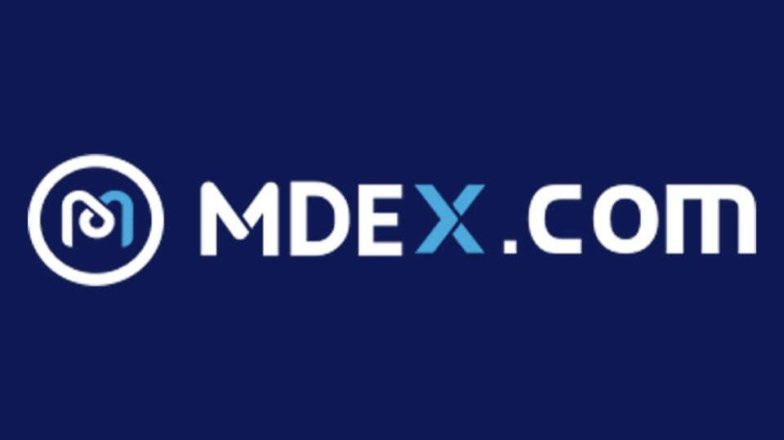MDEX: Overlooked Decentralized Exchange That Pays You to Trade
MDEX is a top multi-chain decentralized exchange that has been flying under the radar of many in the western DeFi community.

Key Takeaways
- MDEX is a multi-chain decentralized exchange operating across the HEXO, BSC, and Ethereum blockchains.
- It employs an innovative dual liquidity and transaction mining incentive mechanism that rewards users with MDX tokens for trading.
- MDEX is currently the largest decentralized exchange on HECO and the second largest on BSC
Share this article
Dubbed the “DeFi Golden Shovel” in cryptocurrency circles, MDEX is a leading multi-chain decentralized exchange built on the Huobi Eco-chain (HECO), Binance Smart Chain (BSC), and Ethereum. It employs an innovative dual mechanism of liquidity and transaction mining, the latter of which effectively rewards users in MDX tokens to trade on the platform.
MDEX Unpacked
Decentralized exchanges have risen to become one of DeFi’s most popular kinds of platforms, both in actual usage and in generating revenues on the protocol level. In less than two years, the total value locked (TVL) in DeFi protocols has skyrocketed by a factor of 240, from $1 billion in June 2020 to the current staggering $240 billion. According to data from DeFiLlama, a significant portion of this value is locked in various decentralized exchanges operating across more than a dozen blockchains, sidechains, and Layer 2 protocols.
Based on statistics from DeBank and dapp.com, one of the top-performing decentralized exchanges by TVL and trading volume this year is MDEX—an AMM-based DEX functioning across the Huobi Eco-chain (HECO), Binance Smart Chain (BSC), and Ethereum blockchains. In terms of active users, trading volumes, and TVL, MDEX ranks second only after Pancakeswap on the BSC and is the undisputed leading exchange on HECO. The cumulative number of wallet addresses that have interacted with MDEX is 1,038,840, the current TVL is approximately $2.2 billion, and the current average weekly trading volume is around $1.25 billion.
The innovative dual mechanism of liquidity and transaction mining is a huge part of its success and what sets MDEX apart from other decentralized exchanges in DeFi. In order to attract and secure sufficient liquidity, DEXes typically incentivize liquidity provisioning by rewarding LPs with their native governance tokens. While MDEX does that too, it is unique in that it also rewards users with its native token, MDX, on every trade. Thanks to this reward mechanism, and by leveraging low-cost and high throughput blockchains like HECO and BSC, MDEX has captured roughly 80% of the entire TVL on HECO.
Another contributing factor to MDEX’s success was integrating its proprietary project incubator, or a token launchpad for Initial MDEX Offerings (IMO), and the launch of its DAO. The IMO capability allows the platform to incubate new projects on HECO and BSC by providing liquidity as a service and standardizing the fundraising process. Thus far, MDEX has facilitated two massively successful IMOs, one for Coinwind and another for Demeter, allowing these projects to raise more than $385 million and $350 million, respectively.
Honoring its roadmap goals promptly, on Sep. 2, MDEX initiated its DAO. Again, the team implemented an innovative twist to governance by establishing monthly “director elections,” in which MDX stakers vote and elect nine members of the community to the so-called “board of directors.” Instead of voting on protocol improvement proposals directly, which is how governance in most DAOs works, the MDEX DAO members elect directors with a month-long mandate to select, vote, and implement community proposals.
MDEX users need to stake their MDX tokens in the Boardroom for 30, 90, 180, or 365 days to participate in governance. In return for staking, the users obtain transferable xMDX “lock-in vouchers” that allow them to participate in IMOs, director elections, voting, making community proposals, and deciding on the allocation ratio and use of the platform’s revenue.
Speaking of revenue, MDEX implements a revenue-share model more similar to that of centralized exchanges like Binance or FTX than that of decentralized AMMs like Sushi or PancakeSwap. Specifically, the protocol charges a 0.3% fee on token swaps and then splits the income into three parts: 0.1% of the profit it uses to subsidize the development and growth of the ecosystem, 0.14% to buy Huobi Tokens (HT) from the secondary market and reward MDX stakers, and 0.06% to buy back and burn MDX tokens, thus reducing the circulating supply and increasing their value.
What is Next for MDEX?
Next on MDEX’s roadmap is growing the platform by adding even more pools or token trading pairs and expanding the ecosystem to new blockchains such as OKExChain, Polkadot, NEAR, and Ethereum sidechain Polygon.
Besides that, MDEX further wants to expand its product landscape by adding an order book that users can use in combination with its AMM liquidity pools. The idea here is to solve trading limitations caused by insufficient depth in liquidity pools and significantly enhance the user’s trading experience. While the platform currently supports only liquidity, transaction mining, and simple token swaps, in the future, MDEX is expected to launch other services such as lending, insurance, support for options and futures trading, and other DeFi primitives.
MDEX’s unique approach to DeFi has made it one of the leading decentralized exchanges in the multi-chain world in less than a year since its launch. As one of very few DeFi protocols that cater to the non-English speaking audience, MDEX has managed to establish a strong foothold in the Chinese, Turkish, Korean, Russian, and Japanese crypto communities and has built a loyal audience of users and contributors.
Share this article
